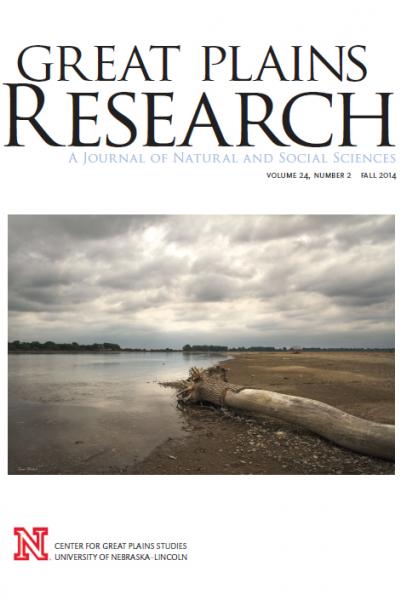
In the past 20 years, the proportion of women in the U.S. Congress has risen 7.7 percent and representation at the local office level is only slightly higher.
It is this wide disparity that Gary Aguiar and Meredith Redlin explore in the newest issue of Great Plains Research. In an article titled "Women's Continued Underrepresentation in Elective Office," they explain how the United States consistently ranks low in female representation when compared to most advanced democracies.
"The glacial pace of progress suggests that no one alive today will see women elected to political office in parity to their numbers in the larger population," Aguiar and Redlin write.
The fall issue of Great Plains Research, a publication of the the University of Nebraska's Center for Great Plains Research, focuses on social and natural science issues that are rising to the forefront of conversation. Other articles in the issue include:
Social Science
The approaches used to gauge public opinion on climate change are examined in "Climate Change Survey Measures: Exploring Perceived Bias and Question Interpretation" from Tarik Abdel-Monem, Lisa M. PytlikZillig, Tonya K. Bernadt and Nicole A. Wall.
The difference between state and national attitudes toward immigrants and the prejudices associated with those attitudes is the focus of Miguel Ceballos and Oksana Yakushko's article, "Attitudes Toward Immigrants in Nebraska."
Natural Science
The importance of sandbars, both manmade and natural, to successful turtle nesting is the focus of "Survey of Turtles Nesting on the Missouri River on the South Dakota-Nebraska Border" by Charles D. Dieter, Laura A. Dixon, Samantha L. Ronningen and Tait Ronningen.
Scientists Yu Ito and J. Hugo Cota-Sanchez revised the distribution and conservation status of Sparganium L., a vital plant in riverside and lakeshore plant communities, by using herbarium voucher specimens in their study as explained in their article, "Distribution and Conservation Status of Sparganium (Typhaceae) in the Canadian Prairie Provinces."
Wildlife managers can better develop long-term population monitoring of jackrabbits across large geographic areas as discussed in Charles D. Dieter and Dustin J. Schaible's study, "Distribution and Population Density of Jackrabbits in South Dakota."
Through their study, "Weather Variables Affecting Canada Goose Harvest in Nebraska," Heather M. Johnson and Mark P. Vrtiska offer recommendations on how to effectively set hunting seasons and manage Canada goose populations that correspond with particular weather conditions.
In “The Influence of a Rapid Drawdown and Prolonged Dewatering on Fishing Effort, Catch, and Harvest in a Nebraska Reservoir,” Christopher J. Chizinski, Dustin R. Martin, Caleb G. Huber, and Kevin L. Pope find that the complex dynamics among angler participation, reservoir quality, and sport-fish community must be better understood to facilitate fishery management.
Great Plains Research is available via Project MUSE and in print from the University of Nebraska Press as an individual copy or as a subscription. Go to http://www.unl.edu/plains for more information.
— Katie Nieland, Center for Great Plains Studies